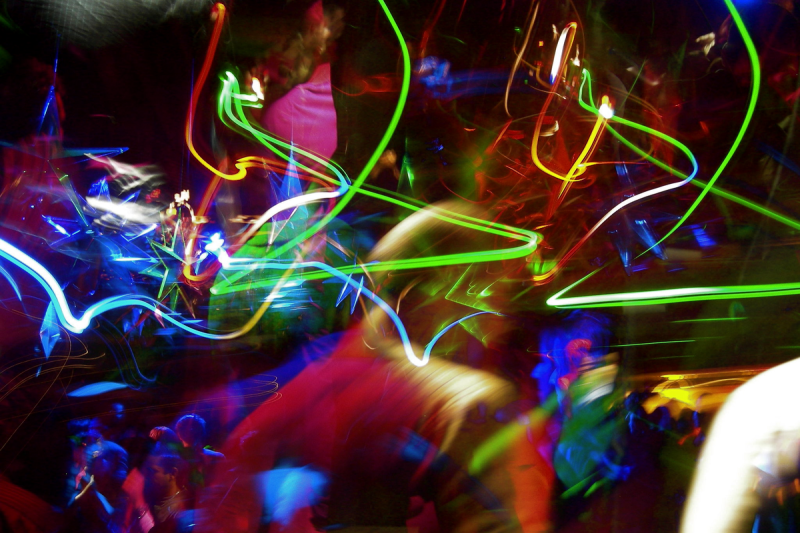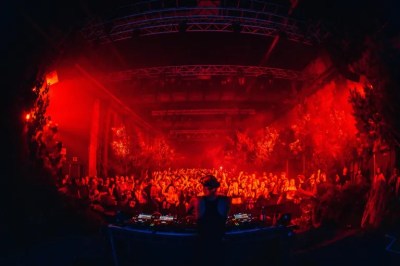
Humanity thus far has supplied most of its electricity needs by burning stuff, mostly very old stuff that burns great but is hard to replace. That stuff is getting increasingly expensive, and the pollution is a bother too, so renewable sources of energy are becoming more popular.
While wind or solar power are commonly used at the grid level, one Glasgow nightclub has taken a different tack. It’s capturing energy from its patrons to help keep the lights on.
Pump Up The Heat

The facility in question goes by the name SWG3, and hosts a variety of club nights and other artistic events. It features multiple spaces with capacities exceeding 1000 people, having been built in what was once a former galvanizing facility and warehouse complex. When the music is flowing, the punters cutting shapes on the dance floor often generate plenty of heat, and that led to an idea.
The basic concept came about when David Townsend, the founder of TownRock Energy, met Andrew Fleming-Brown, the managing director of SWG3. Fleming-Brown was on the hunt for sustainable energy systems to help power the club, and Townsend was in the geothermal business.
The results of this collaboration was a renewable energy system built to take advantage of the energy released in dance. Known as Bodyheat, it captures the energy emitted by the dancers in the club. Heat pumps take the energy released into the room from the patrons, storing that heat into a cube of rock under the nightclub, via boreholes dug 200 meters deep into the ground.
This is pretty much the same as running a regular refrigeration-cycle air conditioner in the club, but the heat from the dancers is pumped into geothermal storage instead of simply passed out into the wider atmosphere. The benefit of storing this energy is that it can then be used to heat hot water to serve the club, or to warm other rooms that may not have as many gyrating bodies to keep the temperature up. The system essentially captures waste heat, and then later shifts it to somewhere it can be more useful.

As for figures, with a full crowd, there should be plenty of energy to harvest. It’s estimated that the average adult puts out around 100 watts at rest, or closer to 250 watts during moderate physical activity like dancing to dull, slow music. But get the crowd pumping with some top-notch high-tempo bangers? You could see up to 500 or 600 watts put out by each person on the floor. With a thousand people in attendance, and a solid DJ set or three? It would be possible to capture tens of kilowatt-hours of heat energy at the very least. Just make sure they drop Sandstorm to really get the rocks hot at the end of the night.
Renewable energy is used to run the heat pumps, keeping the whole system net-zero in terms of carbon emissions. The hope is that in time, the system will enable the club to discontinue its use of municipal gas entirely. This would save on the order of 70 tonnes of CO2 a year.
The system has taken three years to come together, at a cost of over £600,000 ($672,000). That’s around ten times more expensive than it would have been to install conventional air conditioning, according to Fleming-Brown. However, it’s believed that the energy savings should allow the system to pay itself off in around five years or so. Given the enormous costs for energy right now, there’s a better chance than ever that prediction comes true.
There’s already interest to implement the technology in other high-tech European clubs. Townsend reports that the SchwuZ nightclub in Berlin is particularly keen on implementing a similar system of its own.
It’s not the first project to explore capturing energy from dancers in a club. Previous efforts have involved using piezoelectric elements to capture mechanical energy and turn it into electricity. However, the Bodyheat concept has the benefit that it directly benefits the club by directly removing heat, replacing the existing need for a regular air conditioning system. It also doesn’t require the installation of a potentially maintenance-heavy mechanically-complex dancefloor.
The concept doesn’t have to be limited to nightclubs, and could find use in other spaces where large numbers of people gather. The technology of heatpumps is proven and well-understood, and thus we may see more geothermal storage solutions like these proliferating in areas where there is value in stored heat. For now, SWG3 will serve as a useful test case as to whether such a system can work in the real world and be economically viable.
Banner photo: “deep space – cielo nyc” by 416style. Thumbnail: “Clubbing 2” by James Jin
Dancers Now Help Power Glasgow Nightclub
Source: Manila Flash Report
0 Comments